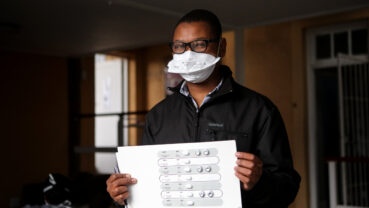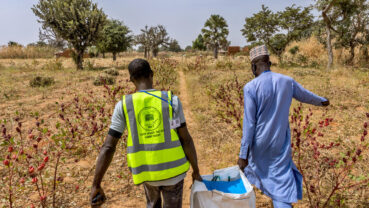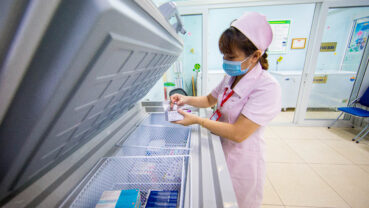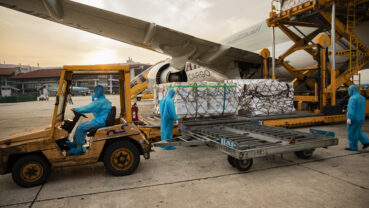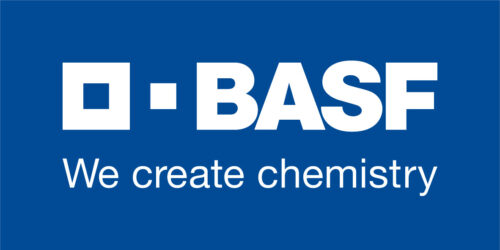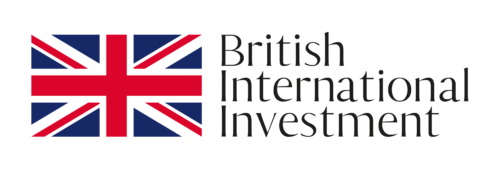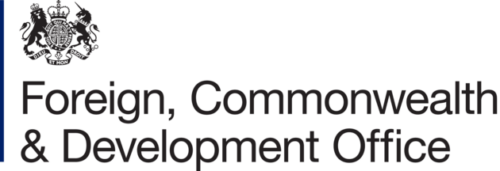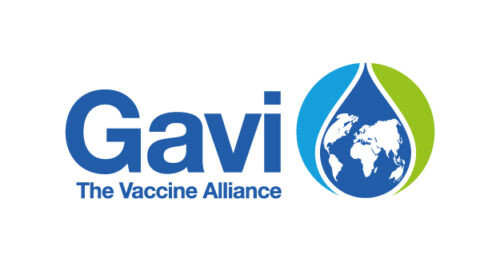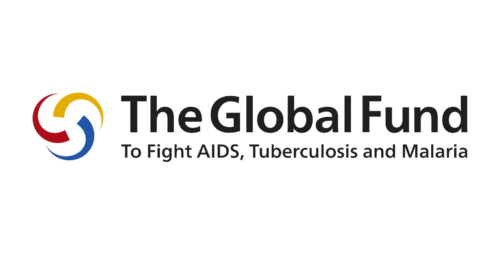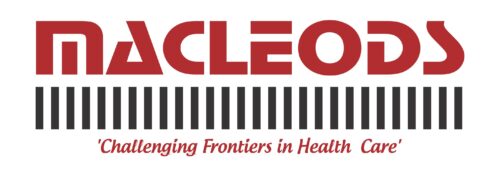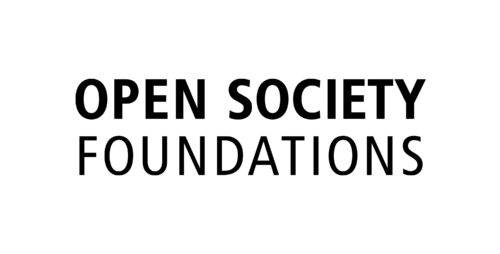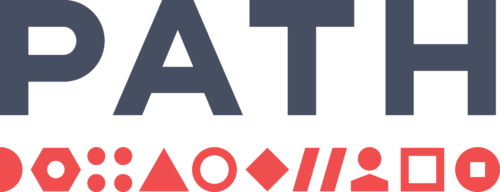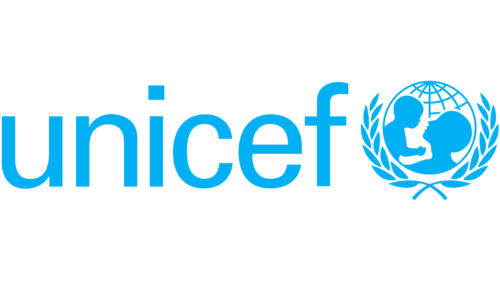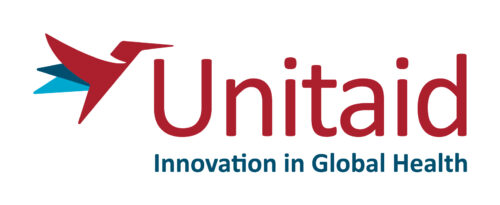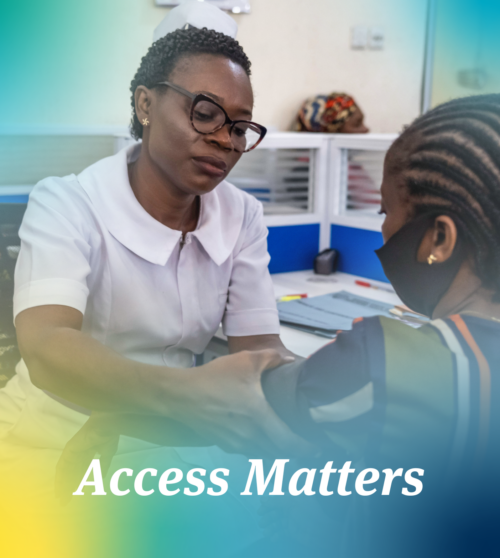Women’s and girls’ health
To address gender inequalities in health, everyone must have equal rights and access to quality healthcare – which means improving access to healthcare for women and girls. Learn how our work is helping.
The challenge
Healthy women and girls are at the heart of a healthy future. Yet despite important progress in the past few decades, significant gaps remain in access to quality healthcare, testing and treatment options for women in many countries. Maternal mortality rates, which had dropped steadily from 2000-2015, have largely plateaued. Gender inequality, discrimination, violence, and a lack of information and tailored services limit women’s and girls’ access to healthcare.
Even when testing and treatment options exist, many women still don’t get the care they need because the products are too costly or not available in countries with limited funding for health systems. As a result, many women die or suffer from preventable, treatable diseases.
For example, postpartum haemorrhage – severe bleeding after giving birth – is the leading cause of maternal mortality worldwide. Yet it can be treated with existing medicines if they are available. Up to 95% of cervical cancer is caused by HPV infection, and yet global HPV vaccination coverage stood as low as 21% in 2022. And women and girls are also disproportionately at risk of acquiring HIV, which remains one of the leading causes of death of women in sub-Saharan Africa.
To address gender inequalities in health, everyone must have equal rights and access to quality, affordable healthcare – which means improving access to healthcare for women and girls. Alongside the development of new tests and treatments for women-specific illnesses, such as breast and cervical cancer, we need to increase access to existing cost-effective products and interventions that we know save lives today.
By the numbers
3x
higher likelihood for adolescent girls and young women to acquire HIV compared to male peers in sub-Saharan Africa
571m
women are affected by anaemia, which can lead to extreme fatigue, higher risk of infection and death
90%
of cervical cancer deaths are in low- and middle-income countries
Our role
Healthcare systems with limited resources need products that offer the best level of care and value for money. MedAccess is coordinating with partners to determine how our innovative finance products can help make medical innovations more available, affordable and accessible to the women and girls who need them.
We complement the work of partners already working to improve the health of women and girls, particularly in maternal mortality, sexual and reproductive health, and infectious diseases. We partner with global health organisations committed to improving access, pharmaceutical companies producing women-specific products, and healthcare providers in countries where the needs are greatest.
To optimise existing healthcare staff and facilities, we identify where women and girls are already accessing medical care, then determine which other treatments could be delivered at the same time. A recent example of this is our agreement with SD Biosensor and the Clinton Health Access Initiative (CHAI) to accelerate access to a dual test for HIV and syphilis.
When women and girls can’t access medical care due to stigma or societal norms, we have supported tools that help them take control of their own health. Our partnership with Wondfo and CHAI enabled Wondfo to make its WHO-approved HIV self-tests available for just US$1 – 30% lower than comparable tests. HIV self-tests give women and girls, including those from marginalised groups at greater risk of HIV such as sex workers and LGBTQI+ people, the ability to test discreetly and in private – and to seek professional testing and lifesaving treatment if they test positive.
We rigorously scrutinise health product markets to identify how our financial products can accelerate access to medical innovations that improve women and girls’ health. For example, ensuring that all facilities where women give birth have a supply of medicine to treat postpartum haemorrhaging would prevent nearly 70,000 maternal deaths a year. Our partners Concept Foundation and Unitaid are exploring how existing products such as tranexamic acid and a new heat-stable drug, carbetocin, could be used widely in locations without cold-chain facilities. If the results are favourable, a MedAccess innovative finance agreement could quickly scale up access and affordable prices for these lifesaving drugs.
Similarly, pooled procurement platforms could help local manufacturers to increase production and quality control for contraceptives and family planning supplies, leading to greater access and lower prices.
“There is significant backsliding on maternal mortality in several countries, partly caused by healthcare disruption due to COVID-19 but also decreasing investment in maternal health. Latest estimates show that 80% of deaths from post-partum haemorrhage occur in low- and middle-income countries. Stark inequity prevents basic products getting to where they need to be to prevent women from dying.”
Dr Michelle Teo
Chief Investment Officer, MedAccess
Case study
Mother-to-child transmission of syphilis, or congenital syphilis, is the second leading cause of stillbirth globally. Babies born with the infection can have serious symptoms such as bone damage, severe anaemia, and nerve problems causing blindness or deafness.
The easiest way to diagnose syphilis is a rapid diagnostic test, which only requires a drop of blood and a few minutes for the result. Treatment can be provided right then and there. But while the World Health Organization recommends that all pregnant women are tested for HIV and syphilis during their first antenatal care visit, in low- and middle-income countries only 40-60% are screened for syphilis – compared to 70-100% for HIV.
SD Biosensor developed a dual rapid diagnostic test for both HIV and syphilis, enabling health facilities to integrate syphilis testing with existing donor-funded HIV testing programmes. But the higher cost of the dual test meant countries were slow to implement it.
We provided a volume guarantee to SD Biosensor, enabling the company to offer the dual test to over 100 low- and middle-income countries for less than US$1 – comparable to the price of an HIV-only test.
With support from our implementation partner, CHAI, this agreement has helped:
- identify 59,000 pregnant women with syphilis,
- avert 10,600 stillbirths,
- avert 7,900 cases of congenital syphilis,
- secure US$880,000 savings for procurers,
- and contribute to an average 21% reduction in the average market price for HIV-syphilis dual tests.
The partnership, like all of our work, has a multiplier effect that goes beyond the initial agreement. By lowering the price of the SD Biosensor tests, other companies are encouraged to offer lower prices as well. This means more countries can switch to the dual test at an affordable price – and improve the health outcomes for more mothers and babies.
The way forward
To meet the targets in Sustainable Development Goal 3: Good health and well-being and Goal 5: Achieve gender equality and empower all women and girls, we must urgently address the stark healthcare inequities women and girls face. Women and girls in low- and middle-income countries should not die for lack of access to lifesaving products that are routinely available in high-income countries.
As we work towards universal health coverage (UHC), we must ensure that the health of women and girls in their diversity constitutes a core component of countries’ UHC provisions.
Working with partners, we can help bridge the gap between makers and buyers, reducing costs for existing products, encouraging innovation for new tools, and bringing lifesaving tests and treatments to the women and girls that need them.
Other global health challenges
Alongside women’s and girls’ health, see the other global health challenges we are helping to address:

